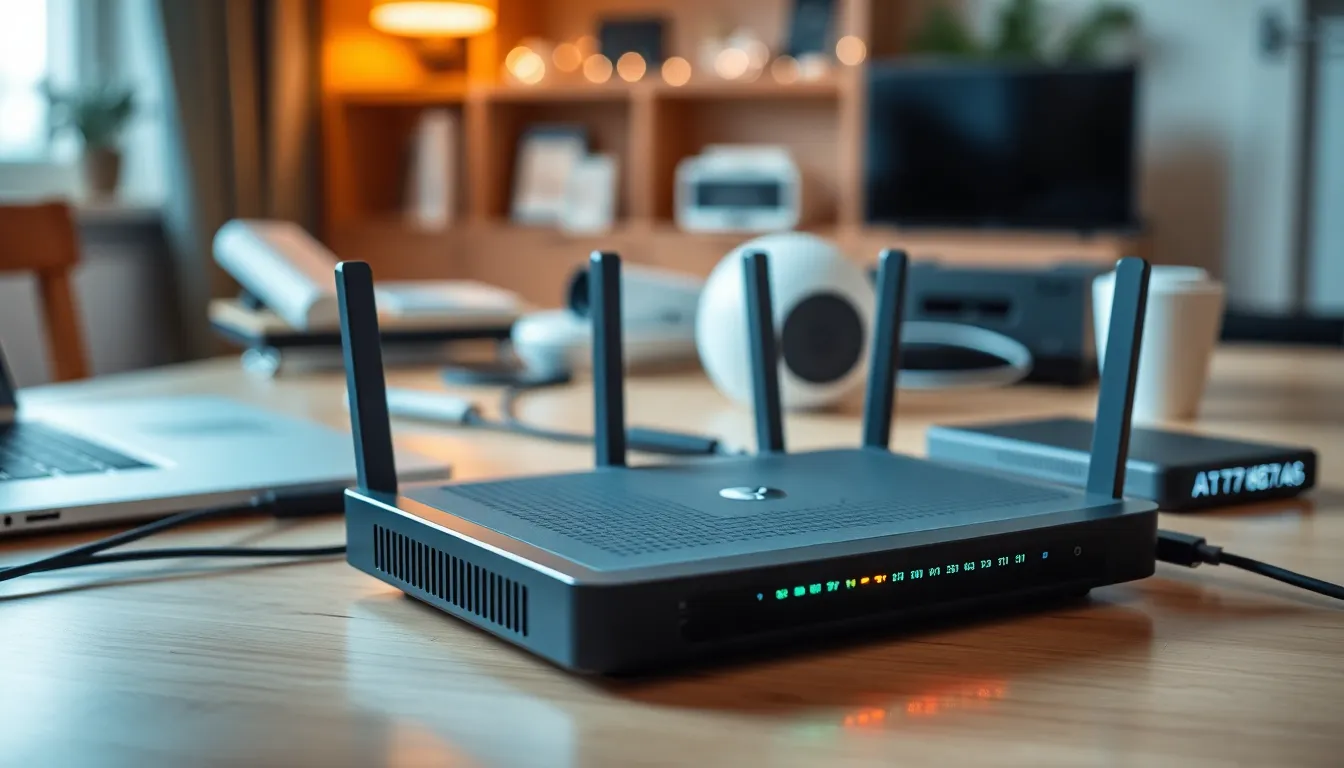Table of Contents
ToggleIn the vast universe of IP addresses, 192.168.7.5.8090 stands out like a quirky neighbor who insists on hosting a barbecue every weekend. It’s not just a string of numbers; it’s a gateway to a world of networking wonders and potential tech mishaps. Whether you’re a seasoned IT guru or someone who just wants to stream their favorite shows without a hitch, understanding this address can make all the difference.
Overview of 192.168.7.5.8090
192.168.7.5.8090 serves as a unique address within a local network. This IP address consists of a standard IPv4 address, 192.168.7.5, followed by a port number, 8090. The address typically indicates a device, such as a router or a server, within local area networks (LAN).
Understanding the role of this address is crucial for managing network connections efficiently. Devices within the same network can communicate through this address, enabling data transfer for various applications. The port number, 8090, often denotes specific services or applications that operate on that device. For instance, it could correspond to a streaming service or a web server.
Local networks often utilize private IP addresses, like 192.168.7.5. These addresses prevent conflicts with public IP addresses on the internet. Consequently, users can efficiently set up and manage home or corporate networks without external interference.
In practical terms, accessing 192.168.7.5.8090 requires entering the address into a web browser or application interface. This action directs users to a specific service hosted on the device associated with that IP address. Individuals encountering difficulties may need to check network configurations and ensure the device is powered on and connected.
Frequent use of this address is common among those managing home networks, particularly for tasks like configuring routers, streaming media, or connecting smart devices. Familiarity with its structure facilitates troubleshooting and enhances the user experience while engaging with networked devices.
Purpose and Functionality

Understanding the purpose of the IP address 192.168.7.5.8090 proves essential in networking. It serves crucial functions in local network communication and device management.
Network Configuration
Network configuration revolves around the IP address 192.168.7.5. This address plays a significant role in assigning IP addresses to devices connected within a local area network. Devices can utilize DHCP to automatically receive configuration settings, promoting seamless integration. Specific settings including subnet masks and gateways facilitate efficient communication and data transfer. Adjusting these aspects often enhances network performance and mitigates connectivity issues. Properly configured networks leveraging this address lead to improved speeds and reduced conflicts.
Device Accessibility
Device accessibility hinges on the IP address and port number, 8090. This structure allows users to easily locate and connect to services hosted within the local network. One can access streaming services, web interfaces, or server functionalities by entering the address into a browser. The specific port number often designates the service type, ensuring users connect to the correct application. Quick accessibility proves beneficial for managing smart devices and media content. Familiarity with this address allows users to troubleshoot and configure their devices efficiently.
Common Uses
The IP address 192.168.7.5.8090 serves diverse functions in both home and business settings.
Home Networking
Home networking often relies on this address for smooth connectivity among devices. Users can easily access streaming services through media servers linked to 192.168.7.5. The port number 8090 indicates a specific service, typically associated with multimedia applications. Smart devices benefit significantly from this configuration, allowing users to connect seamlessly within their local area network. Families utilize the address to manage devices like printers and NAS systems. By configuring routers to recognize this IP, they ensure efficient data transfer and communication throughout the home.
Business Applications
Businesses frequently leverage 192.168.7.5.8090 for various networking tasks. This address supports internal applications, facilitating interactions among servers and user devices. Teams can access web interfaces through this address, handling everything from data management to project collaboration. The associated port number often corresponds to specialized services, adding functionality to existing business operations. Furthermore, IT departments benefit from using this address to configure security protocols and enhance network stability. With a strong understanding of this IP, employees can troubleshoot issues quickly, minimizing downtime and maintaining productivity.
Troubleshooting Tips
Troubleshooting connectivity issues with the IP address 192.168.7.5.8090 can improve overall network performance and enhance user experience. Identifying common problems helps resolve them effectively.
Connection Issues
Connection issues often stem from incorrect configurations or device miscommunications. Checking the physical connections first is crucial. Ensure all cables are securely connected and devices are powered on. Verifying that the IP address is typed correctly in the browser prevents unnecessary errors. Network firewalls could block access, so confirming firewall settings is advisable. Additionally, if multiple devices share the network, one may be using an overlapping IP address. Running a network scan helps identify conflicting addresses and address reassignment quickly.
Configuration Errors
Configuration errors frequently arise during network setup and can disrupt access to 192.168.7.5.8090. Setting an incorrect subnet mask may cause devices to be unable to communicate. Checking that the subnet mask aligns with the router’s configuration is necessary. Allocating static IP addresses manually can lead to mistakes; using DHCP simplifies this process. Moreover, incorrect port forwarding settings might hinder access to specific services linked with port number 8090. Verifying these settings in the router’s interface resolves most access issues. Regular updates of router firmware help maintain optimal performance and security.
Advantages and Limitations
192.168.7.5.8090 offers several advantages that enhance user experience. First, its role in local networks allows efficient communication between devices, such as printers and smart home gadgets. Accessing various services becomes straightforward when entering this IP address into a web browser. Reliability often emerges due to its use of private IPs, reducing conflicts with public addresses.
Additional benefits include improved network management through the use of DHCP. Allocating IP addresses dynamically simplifies device configuration within local networks. Users also find it helpful for troubleshooting connectivity issues, as familiarity with this address aids in resolving common problems quickly.
Limitations exist alongside these advantages. Security risks can arise if the port number is improperly configured, exposing services to unauthorized access. Users must remain vigilant, considering the potential for vulnerabilities associated with open ports. Connectivity issues may also stem from incorrect configurations, leading to frustration when accessing services linked to the address.
Further, device compatibility can be a concern. Certain devices may struggle to connect to specific services tied to 192.168.7.5.8090 without proper configuration. Moreover, reliance on local networks means that any disruptions can hinder access to essential services, affecting overall productivity.
Understanding both the advantages and limitations of 192.168.7.5.8090 informs better decision-making for network management. Balancing its benefits against potential challenges ensures a comprehensive grasp of local networking complexities.
Navigating the intricacies of 192.168.7.5.8090 opens up a world of possibilities for both home and business networks. Its role in facilitating seamless communication and enhancing user experiences cannot be overstated. By understanding this address and its functionalities, users can optimize their network setups and troubleshoot issues effectively.
The combination of the IP address and port number serves as a gateway to various services, making it essential for efficient device management. As technology evolves, staying informed about local network configurations will empower users to leverage their devices fully. Embracing this knowledge not only simplifies connectivity but also enhances overall network performance.



